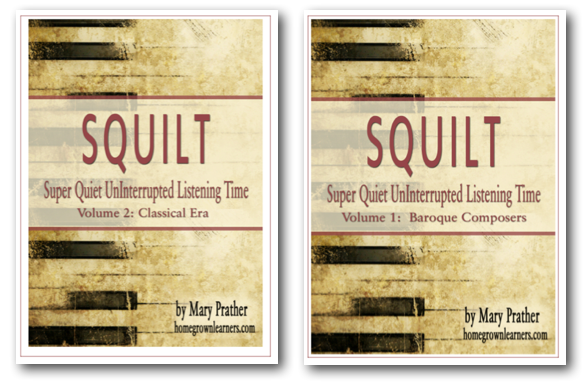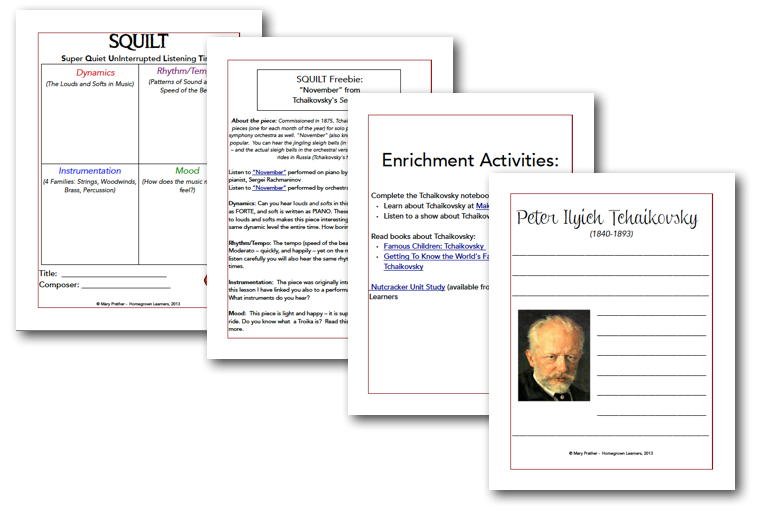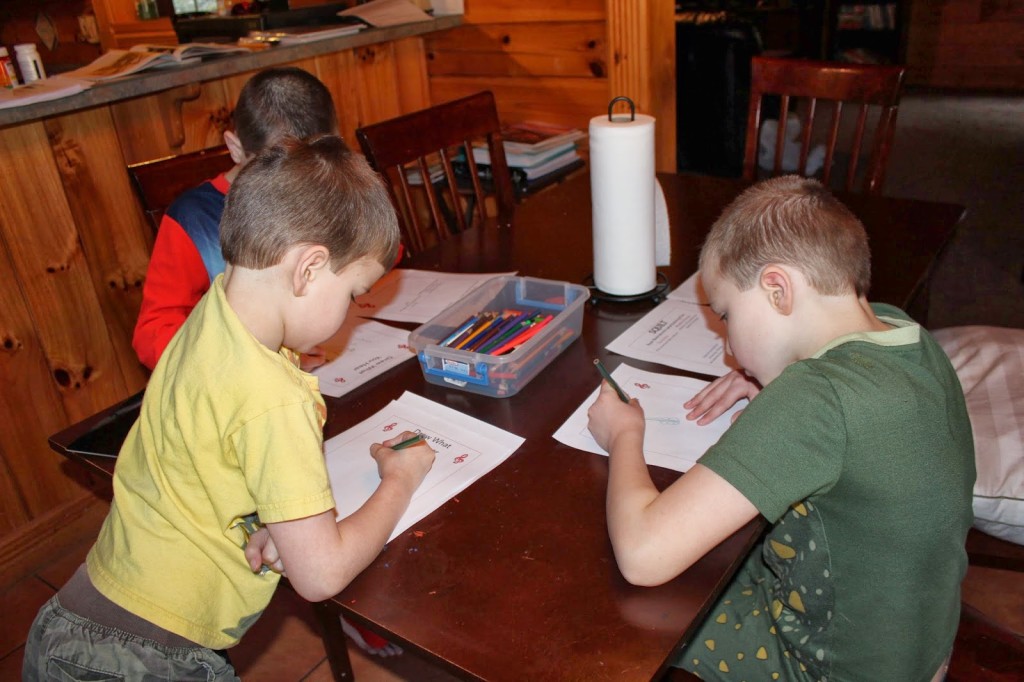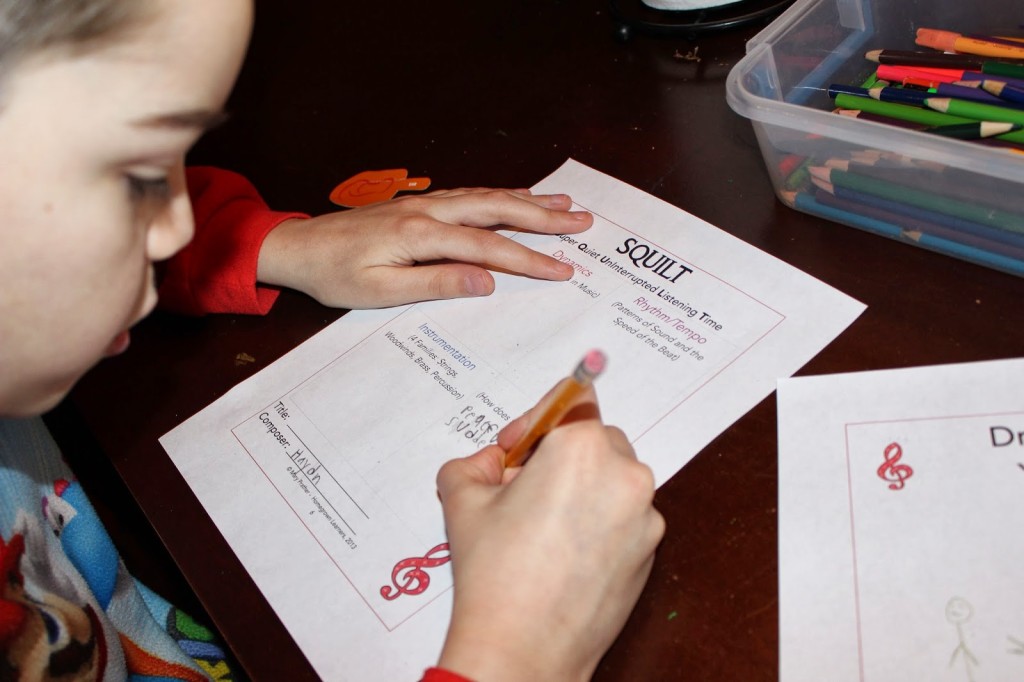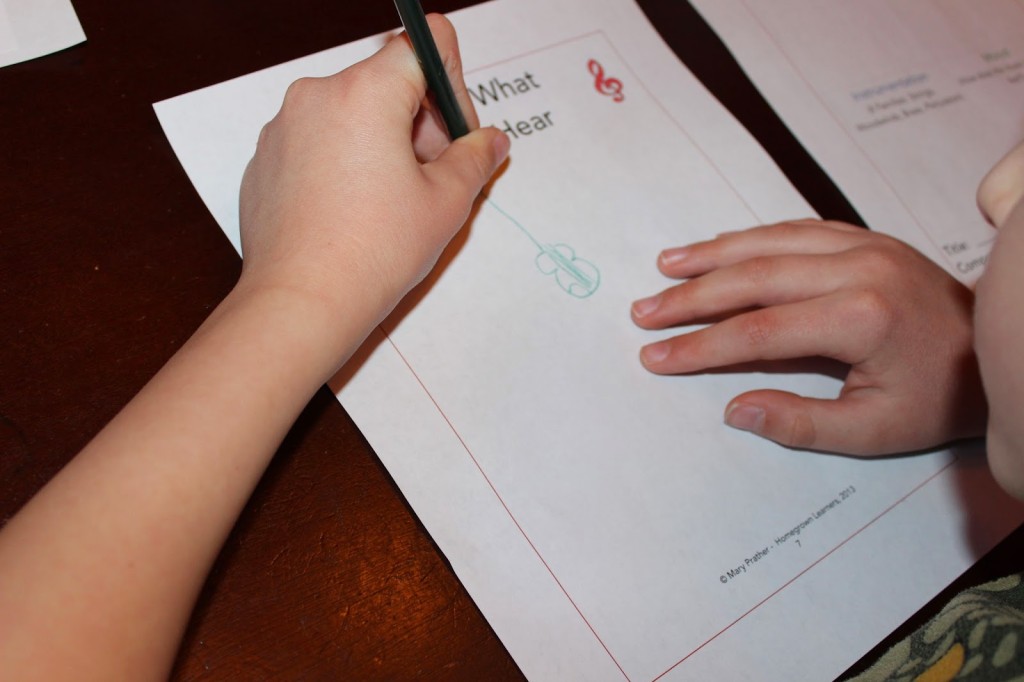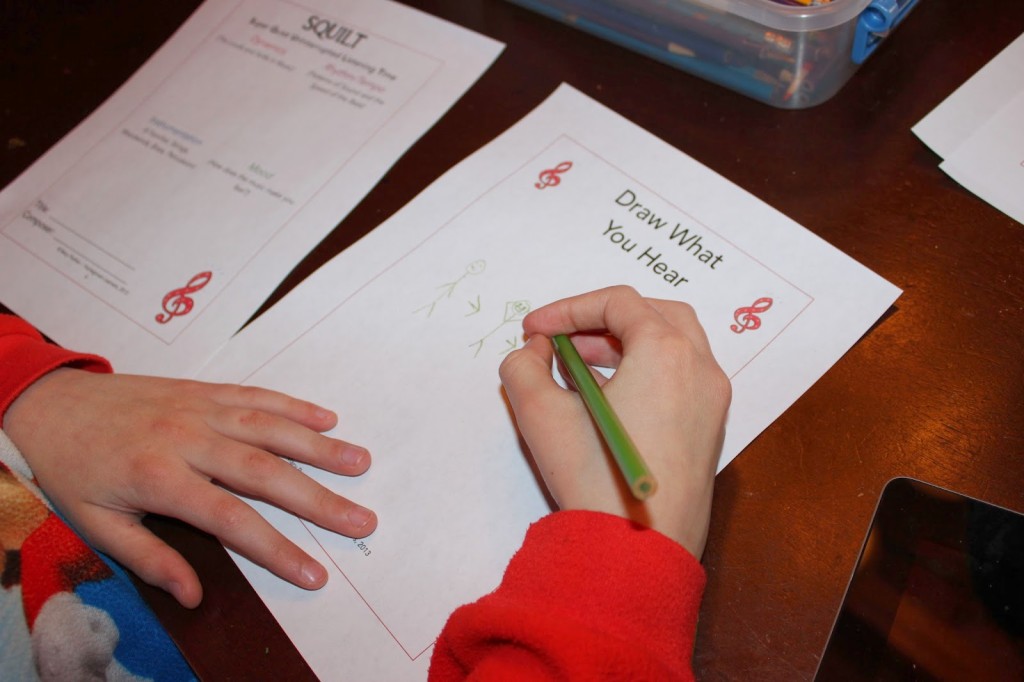As our family has explored different ways to incorporate classical music study into our home throughout the year, I’ve discovered several resources and methods that do not work for us (mainly because of… me!).
Back in November, I planned to make our own classical music studies, starting with a childhood favorite, Prokofiev. About that time, I found out we were expecting Baby Number Four and ended up incredibly overjoyed but too sick and sleepy to come up with the next composer study for December (which was originally going to be Tchaikovsky).
Then… I came across this Free Tchaikovsky SQUILT Lesson. It was offered by another homeschoolin’ mama, Mary, who blogs over at Homegrown Learners. I decided to find out more about this “SQUILT” thing in hopes that we would perhaps-maybe-actually use it.
What is SQUILT?
SQUILT stands for Super Quiet UnInterrupted Listening Time. With SQUILT, children (and adults) are introduced to pieces of classical music a little at a time.
First listening: Listen very quietly with no interruption.
Second listening: Discuss the music as it plays.
Included in the lessons are short, guided explanations of the dynamics, rhythm, tempo, instrumentation, and mood of each piece. Students fill out a SQUILT notebooking page for each piece, writing about those elements of music. Also included are other details and resources, such as a composer biography, specifics about that era of music and other historical background information, enrichment activities, and optional notebooking pages.
- Johann Pachelbel: (1653-1706)
- Francois Çouperin: (1668-1733)
- Jeremiah Clarke: (1674-1707)
- Antonio Vivaldi: (1678-1741)
- J.S. Bach: (1685-1750)
- George Frederic Handel: (1685-1759)
Classical Composers (Volume 2)
- Franz Joseph Haydn: (1732-1809)
- Luigi Boccherini: (1743-1805)
- Muzio Clementi: (1752-1832)
- Wolfgang Amadeus Mozart: (1756-1791)
- Ludwig van Beethoven: (1770-1827)
- Franz Schubert: (1797-1828)
- Schubert
- Berlioz
- Chopin
- Liszt
- Wagner
- Verdi
- Brahms
- Tchaikovsky
- Strauss
- Scott Joplin
- Maurice Ravel
- Bela Bartok
- Igor Stravinksy
- George & Ira Gershwin
- Aram Khachaturian
- Aaron Copland
- Leonard Bernstein
- John Williams
- Andrew Lloyd Webber
(Also available are SQUILT Spotlights which highlight one composer with multiple lessons.)
Download a SQUILT sample by visiting the the Getting Started with SQUILT page at SquiltMusic.com.
…But why?
Just open and go. No preparation is required. I mention a few things (written in the guide) before I play the music (linked within the guide) so our “listening ears” are on, and we all listen. I’m not floundering to come up with an analysis of each piece, and I’m not having to scan a long description to figure out what to say about the music. It is all laid out in the lesson plan. Everything is included – simply.
It teaches us to actually study the elements of music. We are learning about the dynamics, rhythm, tempo, instrumentation, and mood of music. Although we can use the SQUILT printable with any piece of music, the SQUILT lessons for each specific piece help a musically-challenged mom (like myself) hold an intelligent discuss with my children. I’m hoping that as I use the more scripted SQUILT lessons, I will be more equipped to tackle new pieces using the SQUILT page on new unscripted pieces with my children. Right now, I’m learning the grammar of it all!
The boys enjoy it! Our children listen intently for dynamics, rhythm, tempo, instrumentation, and mood – it’s like an “I Spy” for the ears! What’s more, they’re starting to add in their own ways of relating to the music. After the first listening, our boys pretend they are in a cartoon and act out what is happening in that cartoon, or they perform what they think the conductor’s movements would be. Being aware of mood, tempo, dynamics and instrumentation has given them an outlet to enjoy the music more. It’s been an enjoyable less-than-30-minutes added to our week!
It is simple to incorporate. The lessons are short, simple, and understandable. I print one or two pages for my children to use, and that’s it! This is the most important aspect of why we are using this program. It’s the only one where I haven’t dropped the ball. That’s saying a LOT!
Minimal streaming Internet is required. We have trouble viewing streaming videos on our not-so-super-high-speed satellite Internet connection. Because our connection does not allow for much video-watching (and the connection is iffy on streaming radio), we are only able watch short video clips. For longer youtube videos, I have to convert them to mp3 to listen. SQUILT does not have an extensive list of links to videos; I usually only have to convert one or two videos to mp3 to listen. {This would be one thing I would like to see incorporated into SQUILT: to have a link to a downloadable mp3 of the piece from a place like Musopen or archive.org, but most people are probably not living in the boonies where they rely on iffy satellite service.}
Also be sure to check out the Meet the Instruments Study!
Free SQUILT Lessons
One of my favorite things: Mary offers so many free lessons on her site! When you’re unsure of whether or not you’ll use something, it helps to use it a few times without making an upfront investment. Some of the lessons available are:
Free SQUILT Lessons:
Bach’s Toccata & Fugue in D Minor
Richard Strauss
Aaron Copland
Grieg’s Hall of the Mountain King
Chopin’s Minute Waltz
Handel Hallelujah Chorus
Beethoven’s 5th
Benny Goodman
Tchaikovsky Lesson
Mozart’s 12 Variations on “Twinkle, Twinkle, Little Star”(SQUILT Lesson #6)
Learn About An Epic Piece of Music (SQUILT Lesson #7)
Listening to Vivaldi’s Spring (SQUILT Lesson #8)
Superhero Fun (Music, Reading, LEGO) (Squilt Lesson #9)
Music History and Notebooking for The Birds – SQUILT Lesson #10
Music for July 4th – Fanfare For The Common Man (SQUILT lesson #11)
Pink Panther SQUILT Lesson
Download a sample lesson and the SQUILT notebooking page.
Our boys loved listening to the Superman Theme with this free SQUILT lesson. SQUILT incorporates more than just what we think of as classical music… and it shows how we can analyze other types of music, such as Jazz or a film’s musical score. I am actually learning how to listen to and appreciate music!
To learn more about this program, visit the SQUILT website.
We received this product free for the purpose of reviewing it. The opinions expressed herein are my personal, honest opinions. One affiliate link is included in this post. Please read our full disclosure policy for more details.

